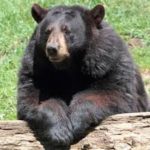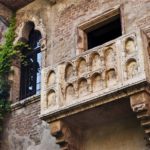Is it spring yet? Like those playful (but in reality dangerous) black bears, it seems like I’ve been in my den all winter, sleeping as the world goes by. At least that’s what you’d think by seeing my lack of presence on social media.
But, unlike the slumbering orsi, I’ve been working my butt off writing the next two installments of my series “Sinner’s Grove.” I’m happy to say I’m thrilled with the results!
The Lair
 The Lair follows on the heels of Sinner’s Grove, my contemporary suspense novel centered around the fictional artists’ retreat on the northern California coast known as “The Grove.” Dani Dunn, the local innkeeper, has just learned of her famous father’s death and must travel back to her home country of Italy to attend the funeral. To say she’s not looking forward to it is an understatement. In fact, she’s petrified. The estate she grew up in holds terrifying memories that she knows she’ll have to confront if she’s ever to get on with her life.
The Lair follows on the heels of Sinner’s Grove, my contemporary suspense novel centered around the fictional artists’ retreat on the northern California coast known as “The Grove.” Dani Dunn, the local innkeeper, has just learned of her famous father’s death and must travel back to her home country of Italy to attend the funeral. To say she’s not looking forward to it is an understatement. In fact, she’s petrified. The estate she grew up in holds terrifying memories that she knows she’ll have to confront if she’s ever to get on with her life.
Complicating matters is the fact that her flirtatious friend, Detective Gabe de la Torre, is coming along for the ride – without being asked. “I don’t need a babysitter,” she grouses. However, as Dani discovers the true evil that awaits her, Gabe proves he’s much more than a friend – he’s a sworn protector who may lose his own life in the process of saving hers.
The Lair is set in Verona, one of the most beautiful Italian cities I’ve ever visited. It’s a magical place made famous by Shakespeare’s Romeo and Juliet, of course, which is fitting for a novel chock full of romance!
One of the challenges I faced in writing the novel was how to get the flavor of the setting across without bogging the reader down in too many factoids. When I read about a place I’ve never been, or about a subject I know nothing about, it’s satisfying to immerse myself in the new world I’ve discovered. But too much of it—even if beautifully written—can … slow … the … story … way … down. So it’s all about choices and weaving the information into the story seamlessly so that the reader doesn’t dwell on the fact that he or she is learning something new.
Another difficulty has been depicting the Italian language for English-speaking readers. The story takes place in Italy, after all, and even my hero and heroine speak Italian. Again, it comes down to making stylistic choices to put in enough of the language to get the setting across without overdoing it for those who don’t speak Italian. Lucky for me, in writing The Lair, I had the help of a dear friend who is a Veronese (person from Verona), so the “flavor” is authentic. I’ll describe the process of dealing with a foreign language in an upcoming blog.
The Depth of Beauty
My other new work, The Depth of Beauty, harkens back to the time period of my first published book, The Art of Love. The main action of that novel, set in turn of the twentieth century San Francisco, ends in April of 1903. The Depth of Beauty begins shortly thereafter. It’s the story of William Arthur Reginald Firestone, the extremely wealthy, devil-may-care business partner of Grove founder August Wolff. Will has the world by the tail, but he’s about to leave his all-too-cushy comfort zone as he discovers an exotic world that lies within the very city he calls home. Before he learns what true beauty is all about, he’ll encounter unique individuals and events that will lead him on a perilous journey of self-discovery.
The setting is Chinatown, complete with opium dens, slave girls and a monumental clash of cultures. I read a lot about the Chinese immigrants of that period. They were a remarkable group of people who endured levels of hardship and discrimination we can’t even imagine putting up with today—and they persevered to become a vital part of America’s cultural heritage. Once again it was a matter of choosing enough material to bring the reader into that world, without making them feel as though they were in the midst of a history lesson! In a future blog or two I hope to share some of the interesting background material I learned that didn’t make it into the book.
I don’t mind saying I’m totally jazzed about how the story of “Sinner’s Grove” is unfolding, both in the present and in the past. I love putting men and women together who take a while before figuring out what their lives should really be about—not to mention who they should be with. I’m already researching the next installments, which I hope will prove equally entertaining. Check back here for updates.
As for coming out of hibernation, I’m like that black bear in another way as well: I’ve lost weight! (if only I could have slept through it!). I’m still in the midst of my “transformation,” and have some thoughts on how the process I’m following can be used to gain a more productive writing life. Stay tuned for that post as well.
In the weeks to come I hope to share a number of concepts that I’m just plain curious about. I call myself “The Quick and Dirty Learner” because I don’t want to know everything there is to know about a topic – just enough to whet my appetite. And I have an appetite for a lot of different topics. Whether it be off-the-wall characters, an unusual setting, or some small happening that sparks a plot idea, I’ll check it out. Here’s a taste of what I mean:
A Quick and Dirty Lesson about Bears and Hibernation
At the beginning of this post I wanted to use the metaphor of “hibernation,” so I checked it out. I wasn’t even sure black bears hibernated, but they do. In fact, according to the Wildlife Research Institute (http://www.bearstudy.org/website/), black bears go through five stages of hibernation, the characteristics of which vary, depending on the region the bears inhabit. For instance, if there’s not that much food around in the fall, they’ll hit the sack earlier (say, October) than if there are tasty acorns, hickory nuts and other munchies available. Around Ely, Minnesota, where the institute is located, the bears may stay in their dens for six or seven months, all the way through the winter. But in areas like eastern North America, not only do the bears retire to their dens later (around November or December), they may even come out and forage a bit during the winter if some thawing has occurred.
So, stage one is the actual hibernation. In that state, bears use up about 4,000 calories per day, which comes from their body fat, but they don’t eat, drink, urinate or defecate …. whaaaat?? How do they do that? Apparently they do it by consuming half their normal amount of oxygen and breathing once every forty-five seconds or so. Their heart rates can drop down as low as eight beats a minute and their blood flow gets reduced by almost half. What would I give for a sleep that deep?!
When it’s time to wake up? That’s stage two, also called “walking hibernation.” It’s about a two to three week period between the time bears leave the den until they get “up to speed,” so to speak. They’re starting to move, eat, drink, and relieve themselves, but they take their time about it (imagine trying to get a teenager off to school on a Monday morning and you’ve got the picture).
Stage three is when most of us see bears in the wild – during the “green” months of spring and summer. That’s when they eat a modest 5,000-8,000 calories per day. If they don’t get enough food during this period, they can’t properly move into stage four, which is called “Hyperphagia.” Personally, I think they ought to change the phrase from “pig out” to “bear out,” because during this period, bears go all out to fatten themselves up, eating as much as 15,000-20,000 calories per day (over three times their normal intake) and loads of water (which of course means loads of pee). Ah, to be a bear during this period—bread pudding here I come!
Finally, in stage five, which happens in the fall, the bears start transitioning to go into hibernation again. They eat less, but keep drinking to cleanse their bodies of excess waste. They also start ….s..l..o..w..i..n..g d..o..w..n, staying active for maybe two hours a day max. Their heart rates begin to decrease and pretty soon, they lumber into their nice cozy dens for lights out. Zzzzzzzzzz
So now I know a little bit about what happens when bears hibernate, and so do you.
I’d love to hear from you. Any fun encounters with bears related to hibernation? Any cool facts to add to my quick and dirty lesson? Did I get anything wrong?
Until next time….






